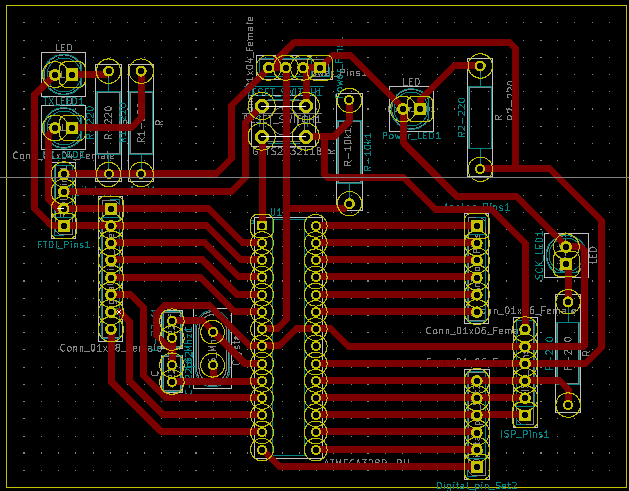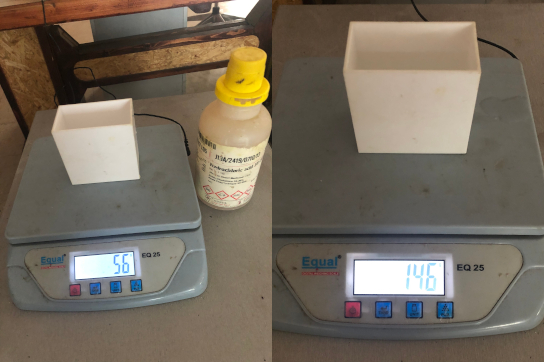12. OUTPUT DEVICES¶
Task for this week :
Individual assignment: Add an output device to a microcontroller board you’ve designed, and program it to do something.
Group assignment: Measure the power consumption of an output device
Board¶
Credits : Sreedhar Ramaswamy
Schematic

PCB design


Chemical etching method:¶
I tried chemical etching method for this board.
Etching is a “subtractive” method used for the production of printed circuit boards: acid or any other chemical is used to remove unwanted copper from a prefabricated laminate. This is done by applying a temporary mask that protects parts of the laminate from the acid and leaves the desired copper layer untouched.
Process
1. Preparing the file for laser cutting
The file is prepared for laser cutting in corel draw. The traces are engraved with the laser cut machine.

2. Laser cutting
- Vinyl sticker paper should be neatly pasted on copper clad material. Colin or any cleaning liquid can be sprayed on the sticker for it to stick well. Before pasting he sticker paper , the copper clad material should be cleaned with isopropyl solution.

- Next, the traces are engraved in laser machine.


3. Preparing recipe for chemical etching
While using chemicals , safety is very important. Gloves is mandatory while working with chemicals.
This documentation helped me in calculating the quantity of chemicals.
There are various ways of doing the PCB chemical etching. I used HCL and hydrogen peroxide because the reaction time is very quick with these chemicals.

Dilution formula

In our lab, we have 36% HCL and 6% hydrogen peroxide. Used the above formula to find the HCL and H202 volume for the above concentration. The volume of these chemicals depends on its concentration.

Calculation of HCL volume
c1 * v1 = c2 * v2
36 % * v1 = 10% * 200
v1 = 56 ml
Here, 200 ml of HCL is used for 10% concentrated HCL. For, 36% concentrated HCL 56ml of HCL should be used.
Dilution : v2 -v1 200ml - 56ml = 144 ml
Therefore, 144 ml of water should be used to dilute 56ml of HCL.
Calculation of H202 volume
c1 * v1 = c2 * v2
6 % * v1 = 3 % * 200
v1 = 100 ml
Here, 200 ml of H202 is used for 3% H202. For, 6% H202 100ml of H202 should be used.
Dilution : v2 -v1 200ml - 100ml = 100 ml
Therefore, 100 ml of water should be used to dilute 100ml of H202.
We don’t have any conical flask and measuring spoons to calculate volume in our lab. So I used the weighing scale which calculate mass.
Converting volume to weight
1 ml = 1 gram
The weighing scale should be set to tare so that it only calculates the weight of the liquid and not the container.
- H202

- HCL

4. Chemical reaction

The unwanted copper is removed. The traces are protected due to the sticker.
The etching time depends on the trackwidth and the board size. This board took around 40 minutes.
The mixture should be agitated regularly every 5 minutes. This will speed up the reaction.
5.Removing sticker

The vinyl sticker should be removed from the traces to get the copper traces.
6.Board

After getting the board , I realised that I need the mirrored board because the through hole components will be placed at the back of the board.
Correction
